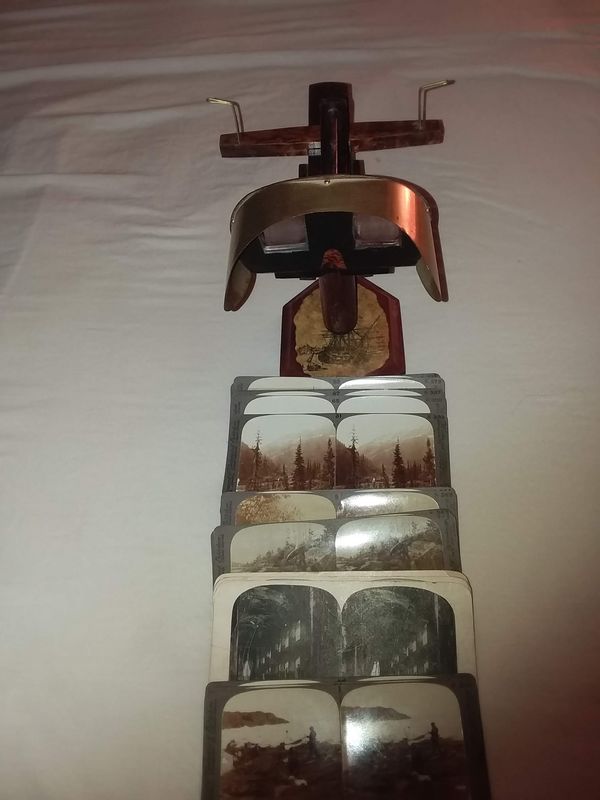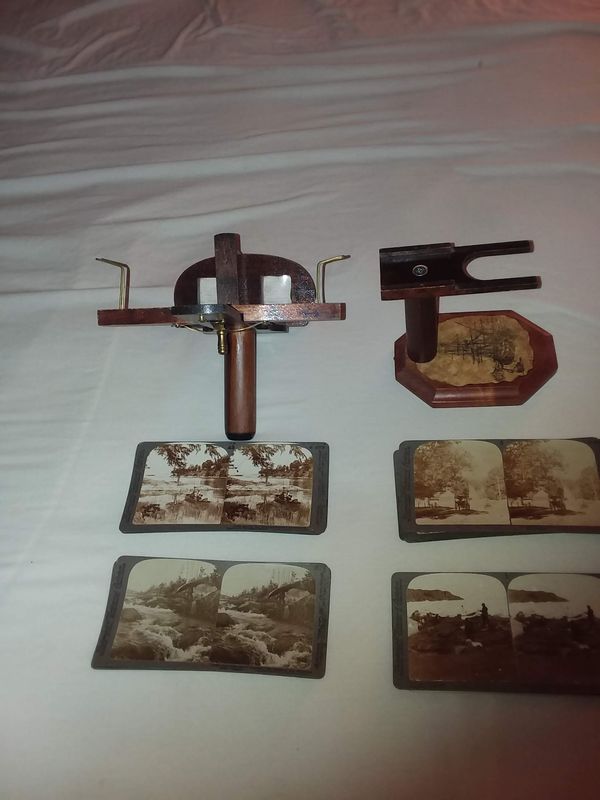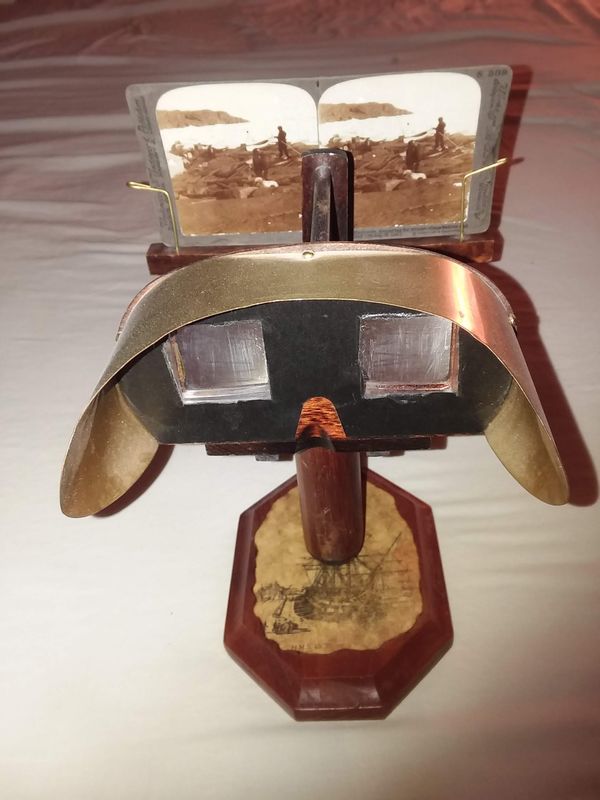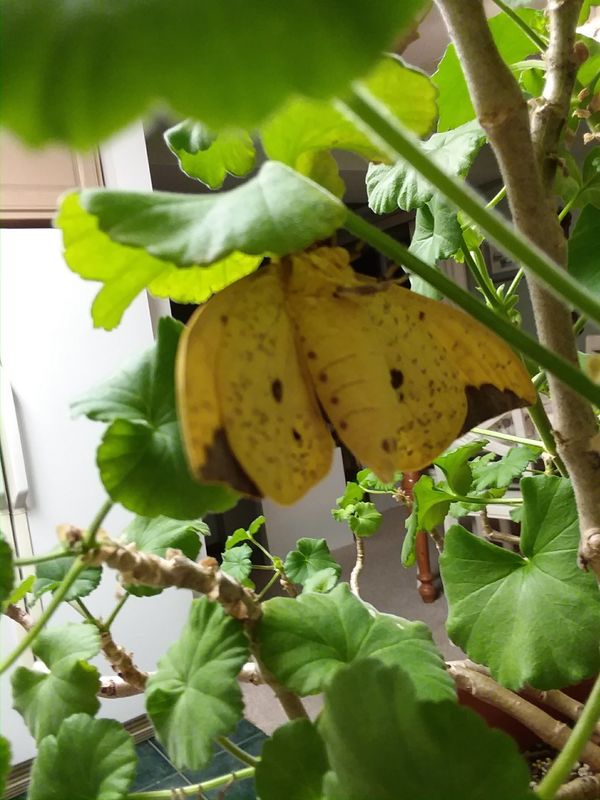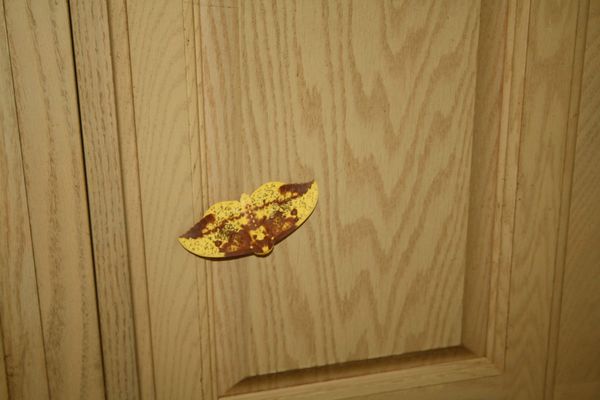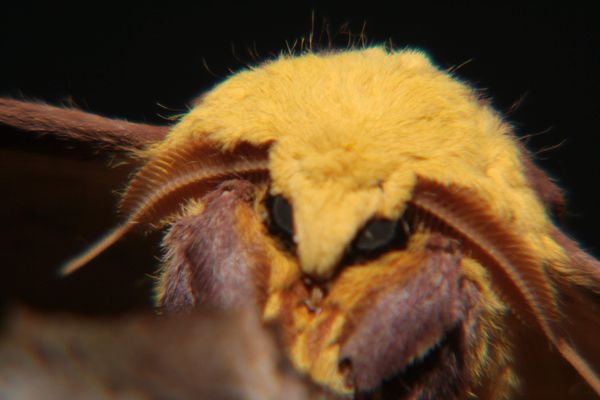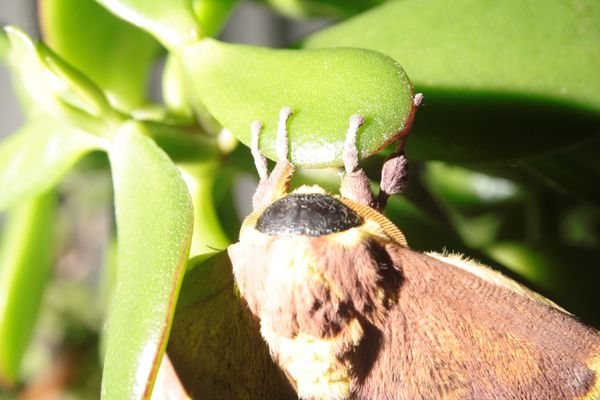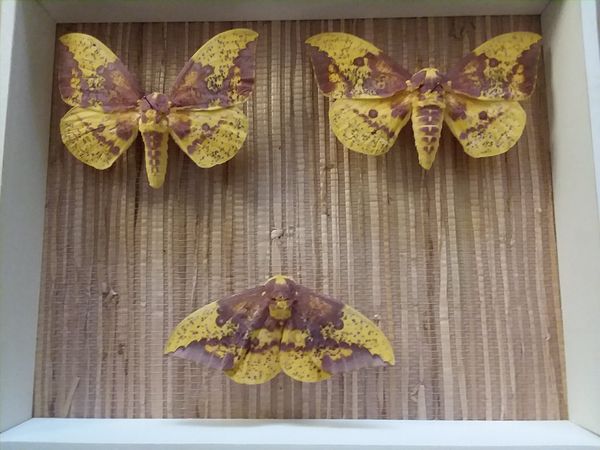Posts for: newtoyou
Jan 5, 2019 17:12:01 #
And baby mice and small birds. And with such dainty manners.
Bill
Bill
Jan 4, 2019 15:42:17 #
I found this at a yard sale, cleaned it and made the stand. The forrunner of the Viewmaster? Much nicer looking, I think.
A Steriopticon. Even sounds better that 'Viewmaster'.
Bill
The last shot puts me in mind of the alien In a Buggs Bunny cartoon.
A Steriopticon. Even sounds better that 'Viewmaster'.
Bill
The last shot puts me in mind of the alien In a Buggs Bunny cartoon.
Jan 4, 2019 15:34:32 #
The oil brought out the subtle color of the shell. Good idea. You took a mundane subject and brought out the beauty.
In the streams where these are found there may a huge population by late summer. In early winter the bottom is littered by empty shells, all eaten on, or eroded. A few trailers(the water flows briskly along gravel beds) of what I believe to be common waterweed, Elodea canadensis, are left.
In the aquarium, ten gallon, about a cupful or snails(one net sweep) will eat all greenery and the populations drops, the empty shells show this eaten, eroded pattern almost 100%. I am assuming they are eaten for the calcium, but???
In an aquarium or in the stream the result to the shells is the same, so I am led to believe the live snails do the eating. In this one you can see where it is eroded about the opening.
There is a surprising number of fresh water shellfish in Maryland, some once harvested for the button industry.
Very nice, Gary.
In the streams where these are found there may a huge population by late summer. In early winter the bottom is littered by empty shells, all eaten on, or eroded. A few trailers(the water flows briskly along gravel beds) of what I believe to be common waterweed, Elodea canadensis, are left.
In the aquarium, ten gallon, about a cupful or snails(one net sweep) will eat all greenery and the populations drops, the empty shells show this eaten, eroded pattern almost 100%. I am assuming they are eaten for the calcium, but???
In an aquarium or in the stream the result to the shells is the same, so I am led to believe the live snails do the eating. In this one you can see where it is eroded about the opening.
There is a surprising number of fresh water shellfish in Maryland, some once harvested for the button industry.
Very nice, Gary.
Jan 4, 2019 00:06:35 #
I go to Cambridge, Md. VA clinic for Dr. appts. Just south is Blackwater Wildlife Refuge. Not much in the way of waterfowl today, but still senic. Snapshots. Vast open grass and water environment. Many eagles(but not today)Sitka deer(b n t) fox squirrels and others, but not today. The sky was just fine.
The house is a true handyman special. Water front property when raining. Air conditioned.
Bill
PS, if you ,lived here, you'd be living in Crappo. Crappo, Maryland, that is.
PPS, shot with cell phone. Wanted location.
The house is a true handyman special. Water front property when raining. Air conditioned.
Bill
PS, if you ,lived here, you'd be living in Crappo. Crappo, Maryland, that is.
PPS, shot with cell phone. Wanted location.
Jan 3, 2019 23:42:43 #
sippyjug104 wrote:
Bill, that is a very impressive collection of beautiful moths you have there. I can see why they were given the name, "Imperial" for they look quite regal.
Look up the Regal, more so, and larger. The caterpillar looks like something out of science fiction. Harmless, tho.
Bill
Jan 3, 2019 18:27:06 #
This was sent by me , to Gary. It is most probably a Hornshell Snail. Goniobasis virginica. They are common in small fresh water streams on the Eastern Shore(Md.). To one inch as adult. I collect these, clams, insects, fish and more by 'sweeping' the grass beds in the stream and then let the sweepings run their course in an aquarium stocked with grass. Better than TV, which I do not watch.
Jan 2, 2019 11:36:27 #
tinusbum wrote:
i have not seen a web,i usually find them when i move something.i have seen so many i know immediately if it a brown recluse or something else.
Horseart's idea, or diatomaceous earth on the floor would help keep population down.
Bill
Jan 1, 2019 19:02:45 #
Mark Sturtevant wrote:
Actually, I have not raised this particular specie... (show quote)
I think how I do this may prevent damage to each other in digging. I burried some, only to have them dig out. By June here, a tethered female, freshly eclosed, will almost always attract a mate. Her eggs go to next year's brood. The pH of the peat inhibits mold. Nothing to start this year ,tho, so I will be looking harder for brood stock.
G'nite Mark.
Bill
Jan 1, 2019 15:31:00 #
Mark Sturtevant wrote:
newtoyou: Please see my other comment in your other thread about this moth.
The Royal Walnut moth is the hardest I have reared. They DO NOT like company. Fresh, misted Walnut(or other Juglans) are preferred. I used J. nigra. Screens for cages were scrounged from a window and glass shop. The Royals had a large cage, 30x30x30 inches or so. One to a cage. Did not refrigerate, eclosed (four of them) in April. Another time had about two dozen in vented buckets of peat in my parents' basement. In the spring the basement flooded. End of that batch. If you can find it, dried ,natural peat is best. Correct about water retention. Moisten once, forget it. Back to larva. A small fan to keep the air moving helps prevent molds by keeping things dry. I had an unused bedroom that had maybe a couple dozen cages at the height of all this. Was recovering from menengitis summer of 78. My sons and neighborhood kids collected food for the various cats and helped with cleaning. Two sheets were hung on a wall and used to eclose Luna, Polyphemous, Cecropia and others. Sometimes shooed fifty or more Luna moths(easiest to rear,three generations a year) out the window into the night.
When grown as I described, I had a Hickory Horned Devil(the Royal Walnut Moth larva) almost six inches and nearly a full ounce in weight. Huge. The color change before pupation has to be seen. Unfortunately, this one was a flood victim after pupation.
Your Maui series was appreciated. The ghost crab a favorite. Another species is here on the east coast, have some up close shots of some somewhere(ten, twelve years ago). And thanks for the pic. of yourself. A general, easy going look, similar to the biologists I worked around and knew.
Bill
Jan 1, 2019 09:34:43 #
EnglishBrenda wrote:
What good camo this moth has, shape and color make it look like a dead leaf but beautiful at the same time. Thanks for the information.
On a different topic which I have been meaning to mention for a while now, get that canon 65 lens out of the wardrobe and start using it or I will come and steal it
On a different topic which I have been meaning to mention for a while now, get that canon 65 lens out of the wardrobe and start using it or I will come and steal it

I have used it a bit. Nothing very impressive. Am waiting on a Yuongo dual flash similar to the Canon MT 24ex. Another week or so. Thanks for the word of encouragement, I tend to lazyness in winter.
England has some beautiful Saterniids. They may be reared with the same methods. The beauty of a newly eclosed moth never ceases to awe me.
Carpe annos singulos novus.
Bill
Jan 1, 2019 00:27:03 #
Horseart wrote:
Put some 20 Mule Team Borax in a big salt shaker and sprinkle it all around the edges of the shop. That will get rid of all bugs!
Ta Da. Ecosafe, too. But then no photographs. ☹️
Not new year in your time zone yet, but HNY ANYWAY.
Bill
Dec 31, 2018 22:43:28 #
I use the basic technique used by Mark, but with refinements. Peat instead of soil is one difference. Keeps mildew down. I think that is what causes hi mortality.
I think some of the close-ups are macro, if not I ask forgiveness. I will not do that again this year.
Obtain eggs. The how is another subject. They feed on many trees, but Liquidumbar(sweet, or star gum, parent of gumballs) is preferred. Start first instar larva on the tenderest leaves, cleaned, examined for bugs, collected away from a busy road. I use butter tubs with small holes in lid to hold twigs in water. Small holes, larva will crawl in and drown if to large. No cage needed first two instars, then I use a nylon pet carrier for a cage.no more than five or six to a small carrier. Change food BEFORE PREVIOUS IS EATEN for best results. Allow larva to crawl into new food. DO NOT FORCE, allow them to move. Same if you want to hold one, put the leaf in your hand and let it crawl on, reverse for off. You will injure animal easily. A week after last instar shed, they get nervous, start to roam, change color, darkens. The heart becomes a prominent vein down the back.
Put one only in a plastic shoe box with two inches milled spagnum, dampened and wrung dry. It will dig in and pupate. In two weeks carefully dig up and put it in a comunal overwinter shoebox, one inch peat, pupa a couple inches apart, then an inch or spagnum. Refrigerate till mid May (in Maryland) and remove from fridge. Dig up. One pupa to a clean plastic shoe box on paper towels with a small branch. Barely mist daily. DO NOT SOAK. No I let mine eclose in the house. Timed right, this can be perpetuated. Excess released if it was local in origin.
If pictures are not up to snuff, I hope content is at least interesting.
Thanks for the pleasant company the past year. My success rate after pupation over 75%. Before pupation, maybe 25-30%. Highest mortality in first two instars.
Bill
I think some of the close-ups are macro, if not I ask forgiveness. I will not do that again this year.
Obtain eggs. The how is another subject. They feed on many trees, but Liquidumbar(sweet, or star gum, parent of gumballs) is preferred. Start first instar larva on the tenderest leaves, cleaned, examined for bugs, collected away from a busy road. I use butter tubs with small holes in lid to hold twigs in water. Small holes, larva will crawl in and drown if to large. No cage needed first two instars, then I use a nylon pet carrier for a cage.no more than five or six to a small carrier. Change food BEFORE PREVIOUS IS EATEN for best results. Allow larva to crawl into new food. DO NOT FORCE, allow them to move. Same if you want to hold one, put the leaf in your hand and let it crawl on, reverse for off. You will injure animal easily. A week after last instar shed, they get nervous, start to roam, change color, darkens. The heart becomes a prominent vein down the back.
Put one only in a plastic shoe box with two inches milled spagnum, dampened and wrung dry. It will dig in and pupate. In two weeks carefully dig up and put it in a comunal overwinter shoebox, one inch peat, pupa a couple inches apart, then an inch or spagnum. Refrigerate till mid May (in Maryland) and remove from fridge. Dig up. One pupa to a clean plastic shoe box on paper towels with a small branch. Barely mist daily. DO NOT SOAK. No I let mine eclose in the house. Timed right, this can be perpetuated. Excess released if it was local in origin.
If pictures are not up to snuff, I hope content is at least interesting.
Thanks for the pleasant company the past year. My success rate after pupation over 75%. Before pupation, maybe 25-30%. Highest mortality in first two instars.
Bill
Dec 31, 2018 21:32:56 #
newtoyou wrote:
The pupa, given by me is dead. One of the other 25%. No moth forthcoming.
Bill
By the way, I turn excess loose.😀
Bill
By the way, I turn excess loose.😀
This is the adult. Somewhat smaller than in nature.
Bill
Dec 31, 2018 20:16:07 #
tinusbum wrote:
nice,i want to see the moth
The pupa, given by me is dead. One of the other 25%. No moth forthcoming.
Bill
By the way, I turn excess loose.😀
Dec 31, 2018 20:13:00 #
Mark Sturtevant wrote:
I have hatched imperial moths, raised from caterpi... (show quote)
The pupa Gary has was one of mine from a couple years ago.my success rate is over 75% with this one once pupated. Larva not so good. I refrigerate to time them. Until I did that they emerged erratically. No food available. You can force mate these by opening the male claspers open and allow them to grip female, but if no food, oh well.
Some beautiful hybrids are produced that way. With your permission, I can explain how I do it, or post anew.
Bill
